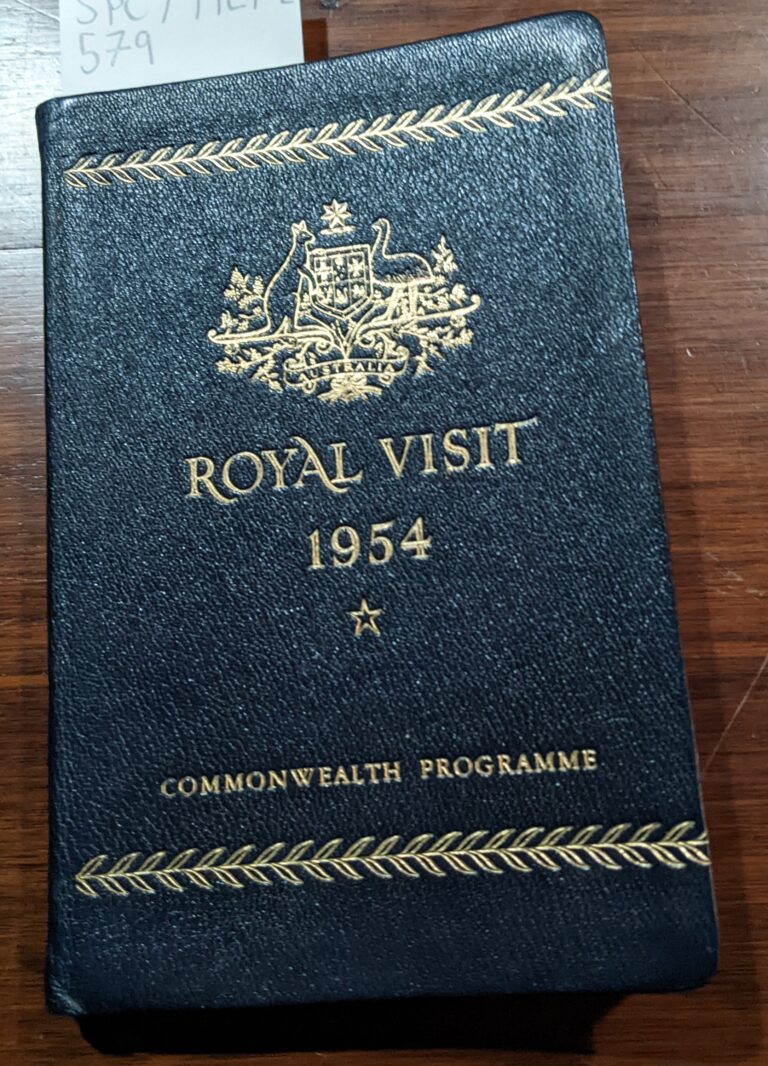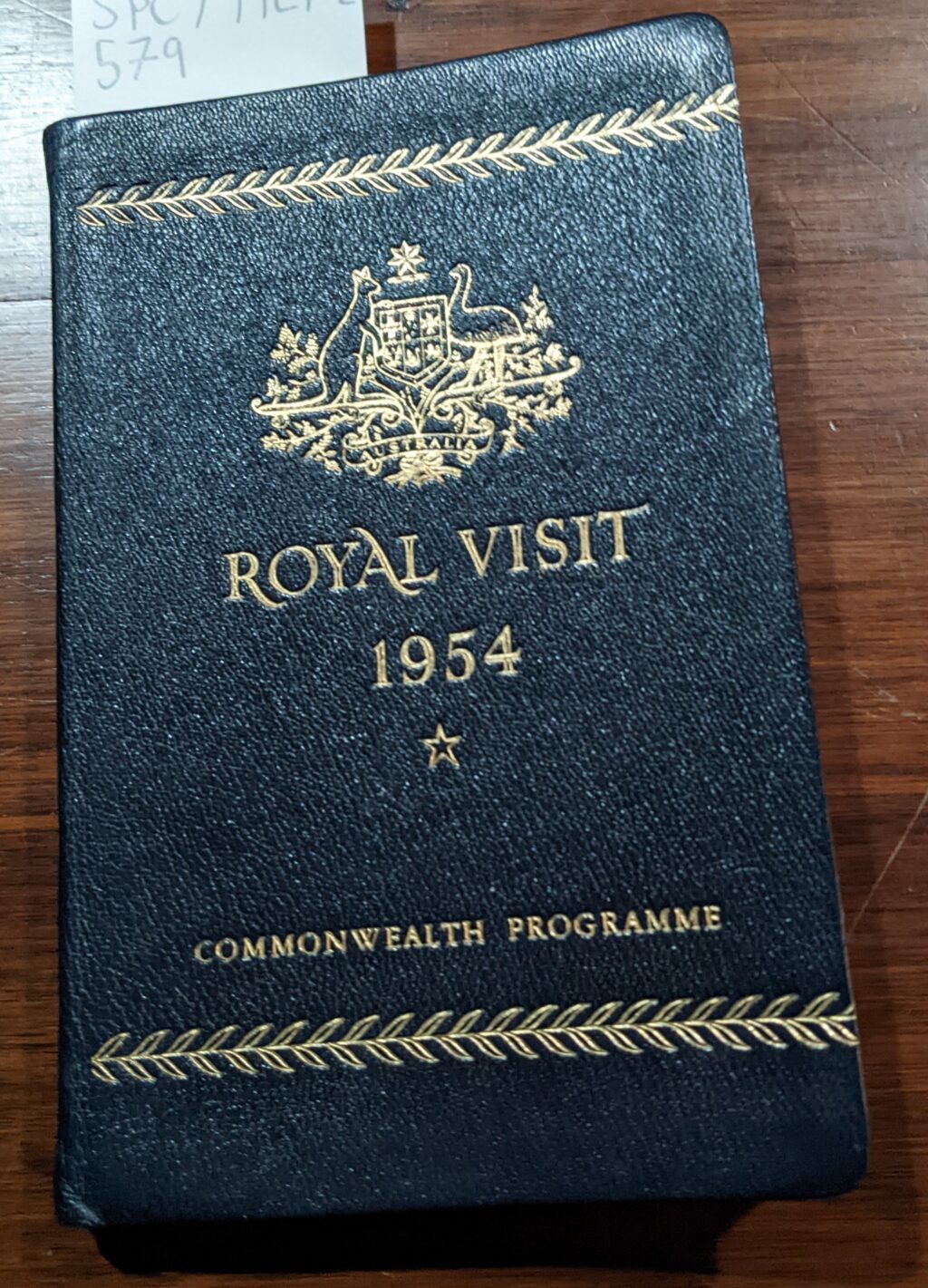Royal Visit, 1954: Commonwealth Programme (1954)
Much has been written on the cultural phenomenon that was the Royal Tour of 1954. In a whirlwind two months, Queen Elizabeth II criss-crossed much of our island continent, as an estimated three-quarters of Australia’s population came out to see their young sovereign in person.
The logistical exercise of organising a series of events of this magnitude was clearly a mammoth task, but who would be entrusted with such a great responsibility? It clearly needed to be someone that the prime minister trusted immensely, so who better than Menzies’s long-serving deputy Eric Harrison.
Harrison was a tremendously important figure in his day, although his role in Australian political history has been largely forgotten. Born into humble circumstances in the then working-class suburb of Surry Hills in Sydney in 1892, Harrison left public school at the age of 13 to work in the textiles industry. Showing remarkable industriousness for a lad of his age, within 8 years he was managing a whole factory.
This meteoric rise as a ‘self-made’ man, combined with a strong sense of public service hardened by a stint fighting on the Western Front, made Harrison a committed and believable proponent of Liberal values. An active member of the All for Australia Leagues, which sought to unite the country to make the sacrifices necessary to get through the great depression, his first claim to political fame was forming a branch, with police protection, in the Auburn stronghold of populist Labor leader Jack Lang.
In the 1931 federal election in which the AFA Leagues helped sweep the new United Australia Party into power, Harrison was elected as the Member for Wentworth. By 1934 he had been promoted to the Lyons Ministry, only to have to immediately have to give up his position, to allow space for Country Party members to join in a formal Coalition (the UAP’s 1931 majority had been such that it had been able to form government on its own). Harrison took the demotion on the chin, and developed a reputation as a selfless team-player such that he even endured the exact same thing happening again in 1940, when Menzies shuffled him out of the Ministry to make room for the Country Party.
Despite the disappointment, Harrison became a steadfast supporter of Menzies (a very rare thing for a New South Welshman given that Menzies had a reputation for being quite unpopular in NSW). When Harrison heard of Menzies’s impending resignation in August 1941, he emotively blurted out ‘Boss, what are they doing to you?’ When a year and a half later Menzies formed the National Service Group as a splinter group within the UAP, Harrison would notably be the only New South Welshman to join.
After the devastating 1943 federal election wipeout, the UAP was left with just four NSW MHRs and no NSW Senators, and Menzies replaced Billy Hughes as UAP leader, with the latter staying on as deputy. That was until Hughes was suspended from the parliamentary UAP for continuing to serve on the Advisory War Council despite the Opposition boycotting it because the Curtin Government was no longer focused exclusively on the war effort, and was instead pursuing partisan legislation. The same position was taken by fellow NSW MHR Percy Spender, leaving just two NSW UAP members, one of whom planned to retire at the 1946 election.
The silver lining for Harrison was that his loyalty was rewarded when he was elected to replace Hughes as deputy. In some respects this was a Steven Bradbury moment, as the UAP desperately needed to be seen to be giving a prominent voice to the most populous state. Nevertheless, Harrison would more than grow into the role, serving as the Opposition’s attack dog relentlessly pointing out the government’s weaknesses, while allowing Menzies to maintain a more dignified and statesman-like composure.
An important figure at the Unity Conferences of 1944, Harrison would play a central part in the formation of the Liberal Party, particularly in keeping the federal Liberal flag aloft in NSW almost single-handedly, until he was joined by 16 NSW ‘49ers who came in with Menzies’s watershed federal election victory. Harrison would go on to be the longest serving deputy Liberal leader until Peter Costello, serving in variety of ministerial portfolios and as Leader of the House.
Although he would remain in office until 1956, the appointment as Minister in Charge of the Royal Visit appears to have been something of a deliberate swansong, designed to make Harrison a known and trusted confidant of Her Majesty ahead of Harrison’s appointment as Australia’s High Commissioner in London. When the grand spectacle came off without a hitch, Harrison was rewarded by being knighted by the Queen in Perth on the final day of the tour.
This was not the end of Harrison’s impact on Australian political history, for his daughter Shirley Walters would go on to become the first Tasmanian woman elected to the Senate (and only the second female Tasmanian to enter federal parliament after Dame Enid Lyons) in 1975. Re-elected on three more occasions, Walters became known as a strong advocate for the pro-life movement and other conservative stances.
You might also like...
Sign up to our newsletter
Sign up for our monthly newsletter to hear the latest news and receive information about upcoming events.



